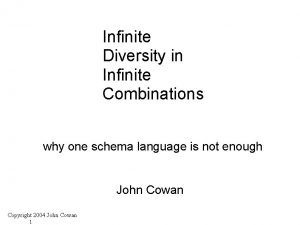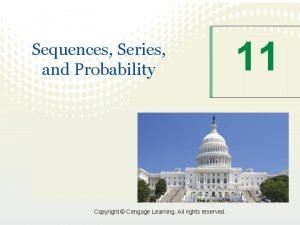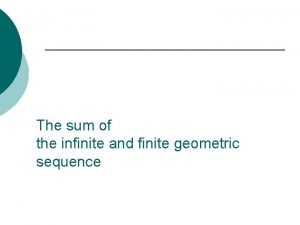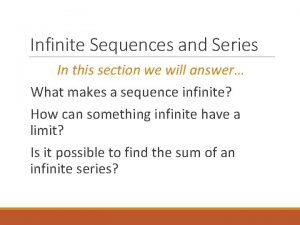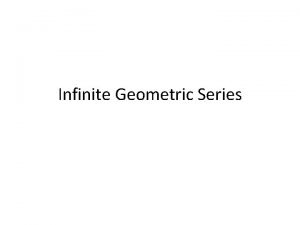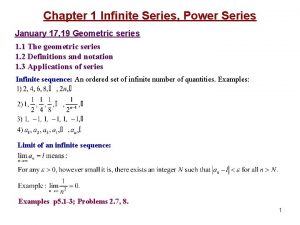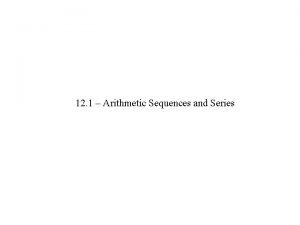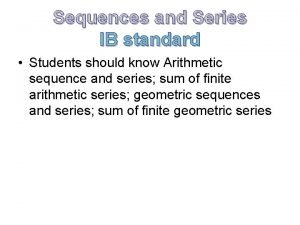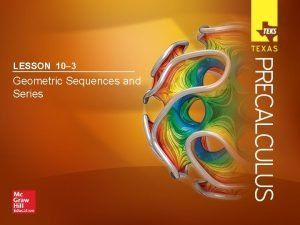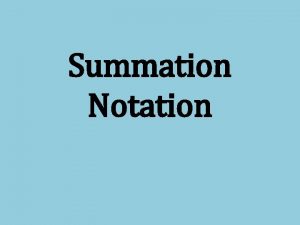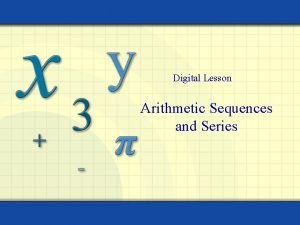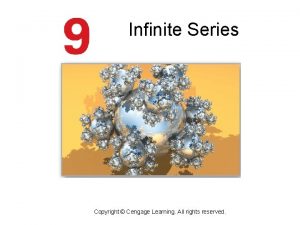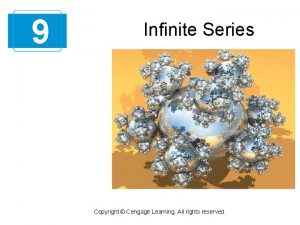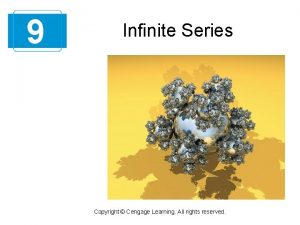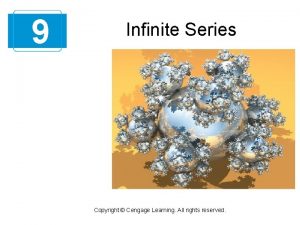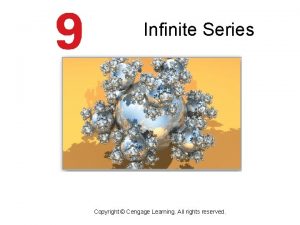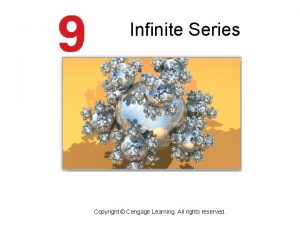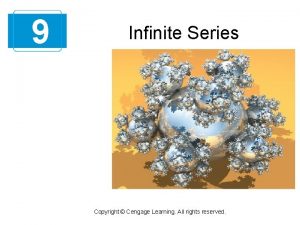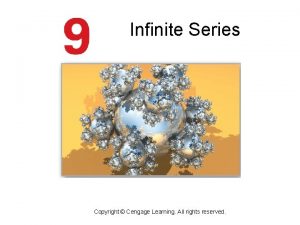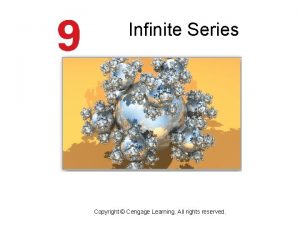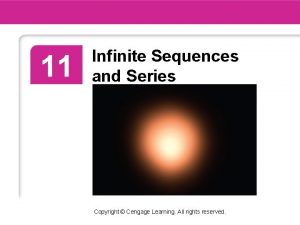P 9 Infinite Series Copyright Cengage Learning All
























- Slides: 24

P 9 Infinite Series Copyright © Cengage Learning. All rights reserved.

9. 8 Power Series Copyright © Cengage Learning. All rights reserved.

Objectives n Understand the definition of a power series. n Find the radius and interval of convergence of a power series. n Determine the endpoint convergence of a power series. n Differentiate and integrate a power series. 3

Power Series An important function f(x) = ex, can be represented exactly by an infinite series called a power series. For example, the power series representation for ex is For each real number x, it can be shown that the infinite series on the right converges to the number ex. 4

Example 1 – Power Series a. The following power series is centered at 0. b. The following power series is centered at – 1. c. The following power series is centered at 1. 5

Radius and Interval of Convergence 6

Radius and Interval of Convergence A power series in x can be viewed as a function of x where the domain of f is the set of all x for which the power series converges. Of course, every power series converges at its center c because 7

Radius and Interval of Convergence So, c always lies in the domain of f. Theorem 9. 20 (to follow) states that the domain of a power series can take three basic forms: a single point, an interval centered at c, or the entire real number line, as shown in Figure 9. 18 8

Radius and Interval of Convergence 9

Example 2 – Finding the Radius of Convergence Find the radius of convergence of Solution: For x = 0, you obtain For any fixed value of x such that |x| > 0, let Then 10

Example 2 – Solution cont’d Therefore, by the Ratio Test, the series diverges for |x| > 0 and converges only at its center, 0. So, the radius of convergence is R = 0. 11

Endpoint Convergence 12

Endpoint Convergence For a power series whose radius of convergence is a finite number R, Theorem 9. 20 says nothing about the convergence at the endpoints of the interval of convergence. Each endpoint must be tested separately for convergence or divergence. 13

Endpoint Convergence As a result, the interval of convergence of a power series can take any one of the six forms shown in Figure 9. 19 14

Example 5 – Finding the Interval of Convergence Find the interval of convergence of Solution: Letting un = xn/n produces 15

Example 5 – Solution cont’d So, by the Ratio Test, the radius of convergence is R = 1. Moreover, because the series is centered at 0, it converges in the interval (– 1, 1). This interval, however, is not necessarily the interval of convergence. To determine this, you must test for convergence at each endpoint. When x = 1, you obtain the divergent harmonic series 16

Example 5 – Solution cont’d When x = – 1, you obtain the convergent alternating harmonic series So, the interval of convergence for the series is [– 1, 1), as shown in Figure 9. 20 17

Differentiation and Integration of Power Series 18

Differentiation and Integration of Power Series 19

Example 8 – Intervals of Convergence for f(x), f'(x), and ∫f(x)dx Consider the function Find the interval of convergence for each of the following. a. ∫f(x)dx b. f(x) c. f'(x) 20

Example 8 – Solution By Theorem 9. 21, you have and By the Ratio Test, you can show that each series has a radius of convergence of R = 1. 21

Example 8 – Solution cont’d Considering the interval (– 1, 1), you have the following. a. For ∫f(x)dx, the series converges for x = ± 1, and its interval of convergence is [– 1, 1]. See Figure 9. 23(a) 22

Example 8 – Solution cont’d b. For f(x), the series converges for x = – 1 and diverges for x = 1. So, its interval of convergence is [– 1, 1). See Figure 9. 23(b) 23

Example 8 – Solution cont’d c. For f'(x), the series diverges for x = ± 1, and its interval of convergence is (– 1, 1). See Figure 9. 23(c) 24
 Cengage chapter 7
Cengage chapter 7 Infinite diversity in infinite combinations
Infinite diversity in infinite combinations Geometric sequence function
Geometric sequence function Sum of a finite geometric sequence
Sum of a finite geometric sequence Geometric series form
Geometric series form Formula for infinite geometric series
Formula for infinite geometric series Convergent geometric series
Convergent geometric series Partial sum of an infinite series
Partial sum of an infinite series Ramanujan infinite series
Ramanujan infinite series How to find sum of arithmetic sequence
How to find sum of arithmetic sequence Sum of infinite series
Sum of infinite series Geometric sequences formula
Geometric sequences formula 9 + 1 = 10
9 + 1 = 10 Difference between finite and infinite sequence
Difference between finite and infinite sequence Arithmetic sequence meaning
Arithmetic sequence meaning Depreciation formula math
Depreciation formula math Geometric recursive formula
Geometric recursive formula Sum notation
Sum notation Partial sum of arithmetic sequence
Partial sum of arithmetic sequence 2009 delmar cengage learning
2009 delmar cengage learning Cengage chapter 5
Cengage chapter 5 Cengage learning heart diagram
Cengage learning heart diagram South-western cengage learning
South-western cengage learning Chapter 13 medical math assignment sheet
Chapter 13 medical math assignment sheet 2009 delmar cengage learning
2009 delmar cengage learning

